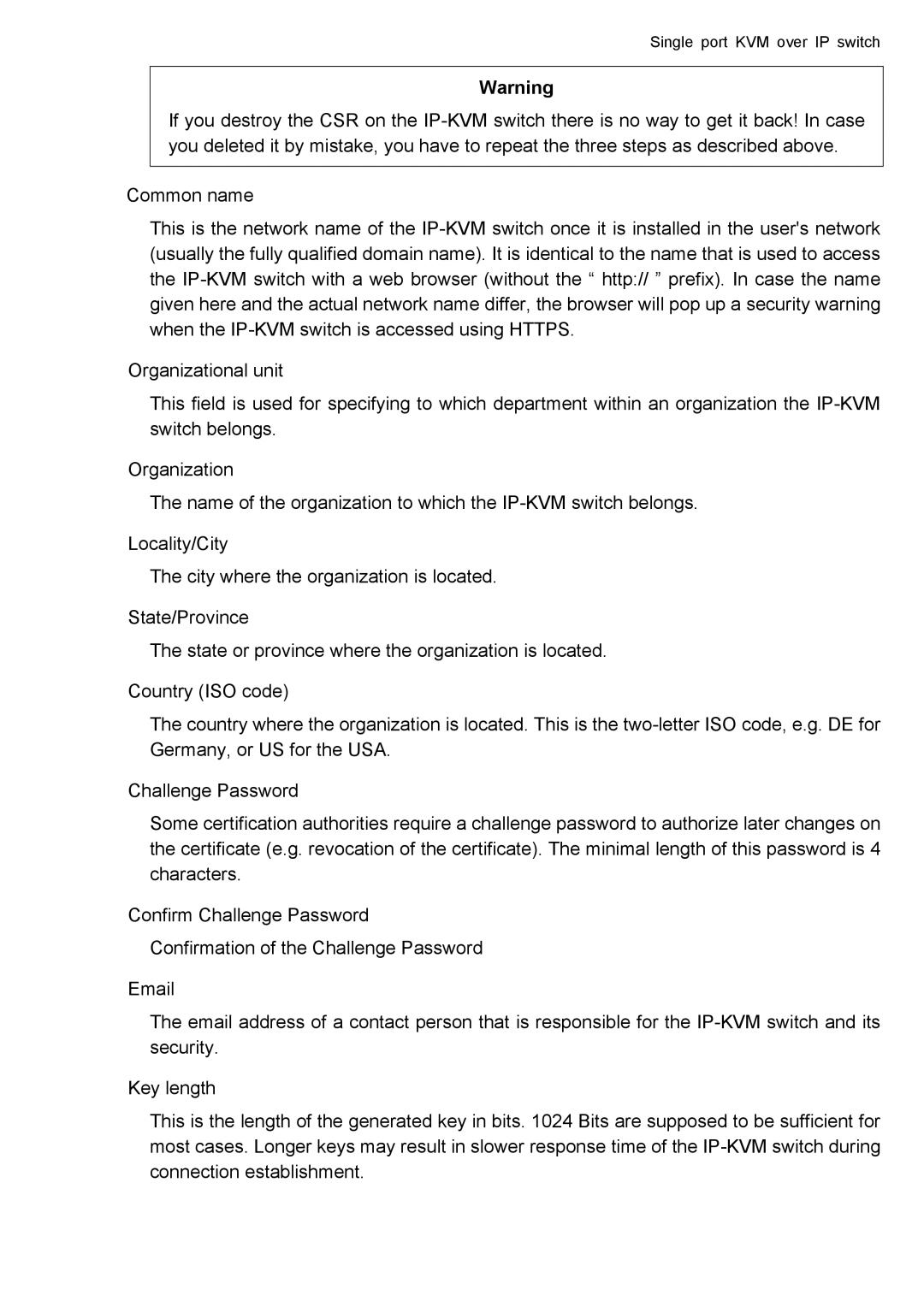
Single port KVM over IP switch
Warning
If you destroy the CSR on the
Common name
This is the network name of the
Organizational unit
This field is used for specifying to which department within an organization the
Organization
The name of the organization to which the
Locality/City
The city where the organization is located.
State/Province
The state or province where the organization is located.
Country (ISO code)
The country where the organization is located. This is the
Challenge Password
Some certification authorities require a challenge password to authorize later changes on the certificate (e.g. revocation of the certificate). The minimal length of this password is 4 characters.
Confirm Challenge Password
Confirmation of the Challenge Password
The email address of a contact person that is responsible for the
Key length
This is the length of the generated key in bits. 1024 Bits are supposed to be sufficient for most cases. Longer keys may result in slower response time of the
